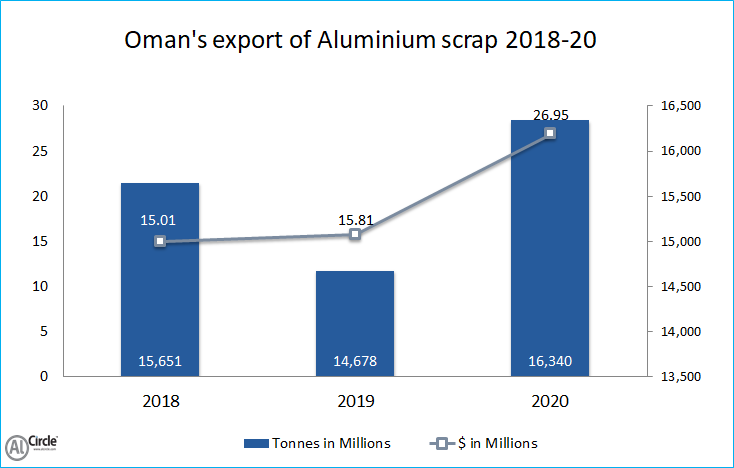

Oman is heavily dependent on oil and gas resources, which generates between and 68% and 85% of government revenue, depending on fluctuations in commodity prices. The key components of the government's diversification strategy are tourism, shipping and logistics, mining, manufacturing, and aquaculture. Oman's economy is expected to contract in 2020 due to the oil price slide and the COVID-19 public health response. An increase in gas output and infrastructure spending plans will help growth recover over 2021-22. Rigid recurrent spending will keep public debt high, estimated to exceed 70% of GDP in 2020 and beyond.

The gulf nation’s export of aluminium scrap during 2018-19 has been recorded at 30,329 tonnes and the revenue generated through this export remained at $30.82 million. The export for 2020 has been evaluated to be at 16,340 tonnes and earnings to stand at $26.95 million; when the export volume and earnings of the existing two years get added, its reflects 46,669 tonnes and $57.77million respectively.
In 2018, Oman’s export of aluminium scrap stood at 15,651 tonnes and foreign revenue generated was $15.01 million, whereas, in 2019, the export saw drop by 6.21%, as the export volume fell to 14,678 tonnes, while the earning remained high at $15.81 million.
Aluminium scrap export for 2020 has been analysed with growth by 11.32%, as the import volume to rise at 16,340 tonnes and earning also to climb at $26.95 million.
Oman’s major trading destinations for exportation of Aluminium scrap are India, Greece, Italy, South Korea, Spain, UAE, etc.
Responses








